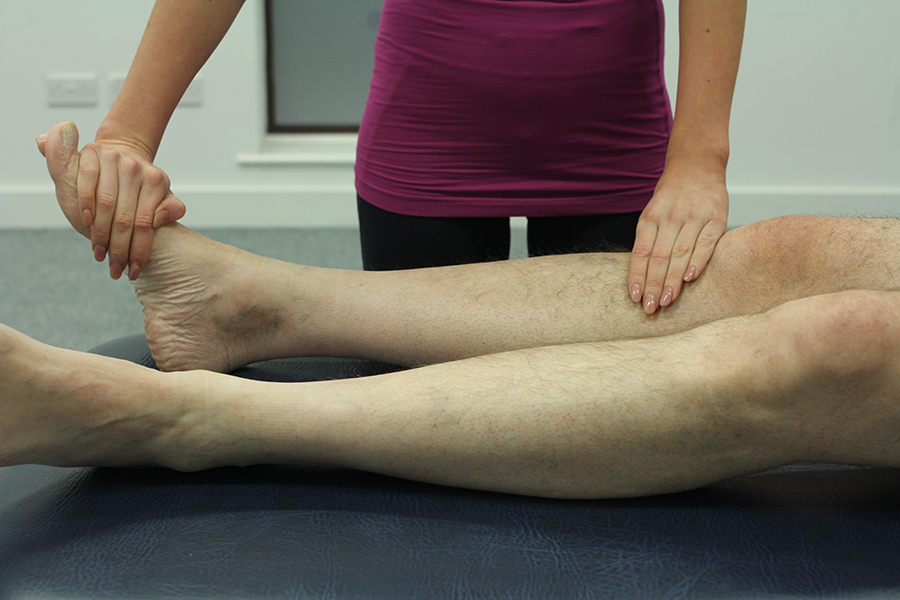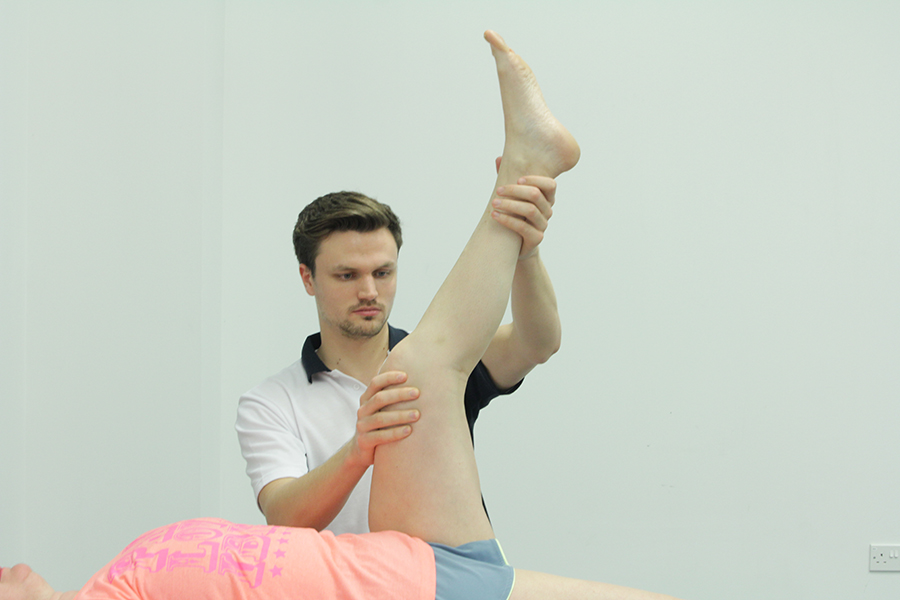Osteochondritis dissecans
Osteochondritis dissecans is a painful condition that affects the articular
surface of a joint. The articular surface describes the surface of joint at
which two bones connect and meet. The result of osteochondritis dissecans
is death of bone or cartilage, which breaks away and falls into the
affected joint space.
If you think you may have osteochondritis dissecans visit Chiropody.co.uk.
At Chiropody.co.uk we assess, diagnose, and treat a number of lower limb
problems.
What is osteochondritis dissecans?
Osteochondritis dissecans refers to a condition that affects either the bone, or the cartilage that helps to form some of the joints in the body. Osteochondritis dissecans occurs when a piece of bone or articular cartilage separates due to a lack of blood supply. The separated piece of bone or cartilage can fall into the joint space of the affected joint producing pain and stiffness. The most common joints in the lower limb affected by osteochondritis dissecans are the knee and ankle.
What causes osteochondritis dissecans?
Osteochondritis dissecans is caused by avascular necrosis. Avascular necrosis occurs when the blood supply to a part of bone is restricted or cut off. The result of avascular necrosis is death of bone, which in the case of osteochondritis dissecans causes the affected bone to break away. The loose fragment of bone then falls into the joint space and this produces painful symptoms. The exact cause of avascular necrosis associated with osteochondritis dissecans, despite research, is not completely understood. What is known, however, is that certain factors can increase the risk of osteochondritis dissecans, and these include:
- Injury or trauma to the joint in question
- Overuse
- Genu varum/valgum
- Lesions to the meniscus in the knee
- Ligamentous laxity

What are the signs and symptoms of osteochondritis dissecans?
The signs and symptoms associated with osteochondritis dissecans include:
- Joint pain and tenderness
- Joint stiffness
- Joint 'locking'
- Swelling
- Weakness in the affected joint
- A limp
A number of conditions can produce joint pain and stiffness. If you experience these symptoms it is important that you are assessed.
How is osteochondritis dissecans diagnosed?
Osteochondritis dissecans is diagnosed following the signs and symptoms and an examination of the joint effected. Osteochondritis dissecans affecting the knee will have a positive Wilsons test. An X-ray is necessary to confirm the diagnosis and to locate any loose fragments of bone. It is important that osteochondritis dissecans is diagnosed quickly in order to reduce complications and to gain the best results from treatment.
Benefits of podiatry for osteochondritis dissecans
If you have osteochondritis dissecans podiatry may benefit you following an
appropriate immobilisation method, and physiotherapy.
If you have osteochondritis dissecans podiatry may benefit you by providing
you with:
- An accurate diagnosis. You will then be referred for X-ray in order to confirm the condition.
- Improved lower limb mechanics and function
- Improvement in the range of motion of the affected joint
- Improvement in muscle strength and flexibility
- Reduction in pain
Following the appropriate first line treatment podiatry may benefit you
with the provision of prescription orthoses, which will improve the
mechanics of your foot and lower limb if poor mechanics is diagnosed as
being a contributory factor. Orthoses work by altering the forces acting on
the foot and lower limb so that painful structures are offloaded, allowing
for improved function of the lower limb.
If the leg has been cast in order to immobilise the joint affected by
osteochondritis dissecans, then the joint will be stiff following its
removal. Podiatry can improve the joints range of movement and muscle
strength and flexibility by providing you with range of motion exercises,
strengthening exercises and a stretching programme.

What would podiatry for osteochondritis dissecans involve?
At Chiropody.co.uk if you are suspected of having osteochondritis dissecans
you will first require a thorough assessment. The first part of the
assessment is the history taking, which encompasses medical history, signs
and symptoms, and a history of the problem. Following the history, the
affected joint will be examined. If you are diagnosed with osteochondritis
dissecans you will be asked to have an X-ray in order to confirm the
diagnosis.
Podiatric intervention would then cease until any appropriate treatment has
taken place (e.g. surgery, immobilisation, physiotherapy). Once the
affected joint has healed, podiatric intervention may resume. A
Biomechanical assessments
is recommended at this stage in order to assess and improve any poor foot
and lower limb mechanics. Foot and lower limb mechanics are improved upon
with the following:
- Orthoses
- Stretching Programmes
- Range of Movement Exercises
- Strengthening Exercises
- Advice and education
- Footwear review
Summary
Osteochondritis dissecans is a condition that produces pain, swelling, and
restricted movement at the joint affected. The most common joints affected
by osteochondritis dissecans that podiatry treats are the ankle and knee.
Osteochondritis dissecans occurs when a fragment of bone or cartilage
breaks away and falls into the joint space. The fragment of bone or
cartilage breaks away due to avascular necrosis, which occurs when the bone
is starved of its blood supply, causing the part affected to die and break
away.
If you think you may have osteochondritis, if you have had the condition in
the past, or, if you have any problem affecting your foot or lower limb and
you would like some advice on what can be done to improve the condition
and/or function of the joint affected, please visit Chiropody.co.uk. At
Chiropody.co.uk we assess, diagnose, treat and manage a range of conditions
affecting the foot and lower limb.
To arrange an assessment with one our podiatrists please Email office@chiropody.co.uk,
alternatively call 0330 088 4222.
Save 5% by booking an appointment online.



We work with:

Individuals

Organisations

Health professionals
Get in Touch!
0330 088 4222
If you would like to speak to one of our specialists then please complete this form.
We are open 7 days a week








